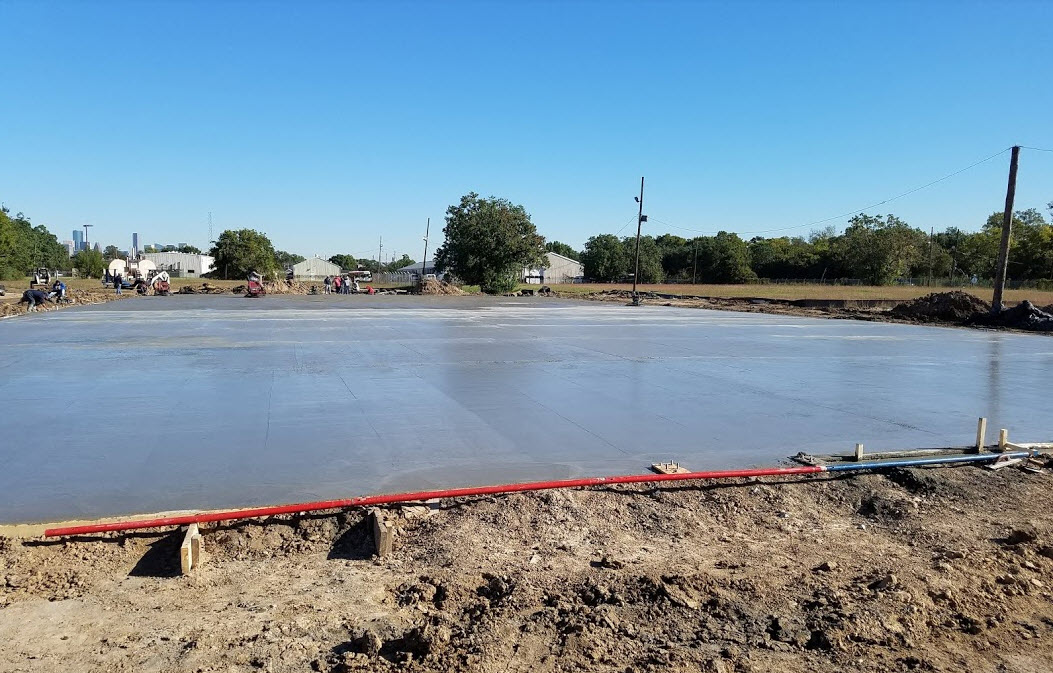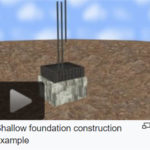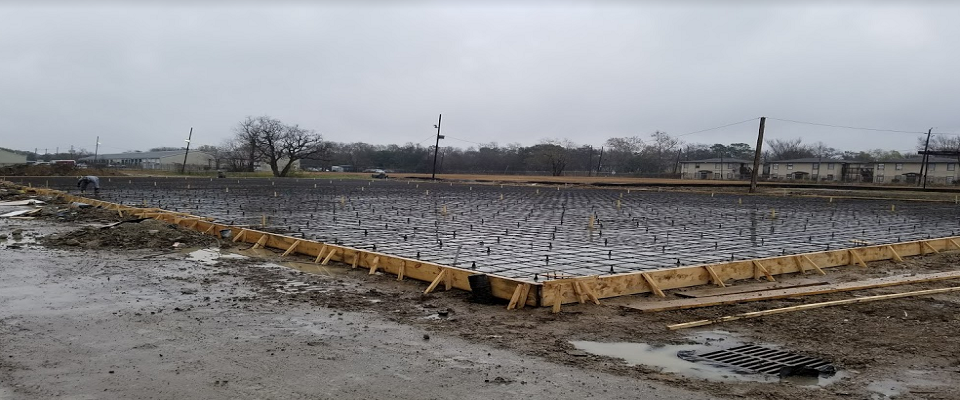Slab On-Grade Foundations

SLAB ON GRADE FOUNDATIONS
Slab-on-grade foundations (also known as floating slab foundations) are a formal structural engineering best practice whereby forms are created on top of the ground by experienced concrete contractors. The Concrete is then poured into the mold at the desired PSI (pounds per square inch) such that no space exists between the ground and the structure being built. Concrete footings and slabs on grade typically require a concrete of 3,500 to 4,000 psi. The slab becomes the foundation for the home or building structure.
Slab Foundation Thickness
Typical Slab On Grade Thickness is 4”-6” thick. The thickness varies depending on the slab’s purpose. Patios, decks, and sidewalks are usually 4”. For heavier loads such as driveways, commercial or residential slabs, we usually see the thickness of 5”-6” . For larger trucks such as dumpster pads and 18-wheeler truck traffic, it is not uncommon to see the thickness at 7”-8”.
Slab Foundation Footings
Most foundations require footers that are poured at 24” below the final finish grade. Once the concrete footers are poured, the slab concrete is poured on top of the footers.
See Video Animation Here:
Slab Foundation Settlement
Many people ask whether or not foundations settle? The answer usually depends on whether proper soil compaction occurred during construction. Proper pad site preparation is essential before the foundation work begins to assure underlying soil is compacted. Soil compaction is Calculated as a percentage by dividing the dry density of the material from the test site by that material’s moisture density relation curve’s maximum dry density and multiply by 100%. Normally pads are compacted to a minimum of at least 95%.
How long do slab foundations last?
If poured properly, slab foundations should last a lifetime or at least 80-100 years. In addition to proper pouring best practices, vapor barrier (waterproofing), and chemical barriers are also essential and can impact the longevity of the slab.
Disadvantages of Slab On Grade Foundation
Most people would agree the most prevalent disadvantage of slab on grade foundation is the potential for cracks. In addition to structural integrity compromised, the cost of repairs from a crack in the slab can be a financial burden. It is important to remove tree roots and compact soil properly before the slab is poured.
Benefits Of Slab Foundations:
While the disadvantages of slab on grade exists, there are also Advantages. One of their many benefits is that foundations are usually less expensive compared to alternatives. Since wooden members such as floor joists aren’t required, as they are with pier and beam structures, the overall cost of slab foundations are much more affordable.




